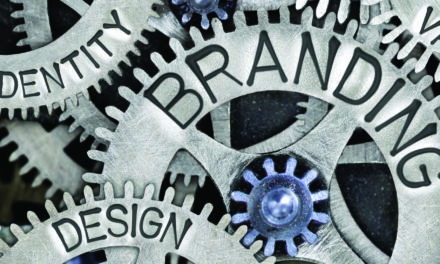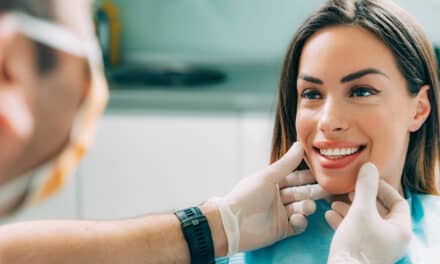Few were saddened by SmileDirectClub’s demise, but Chris Bentson says the company’s legacy includes important lessons for the industry.
By Steven Martinez
On December 8, 2023, direct-to-consumer aligner provider SmileDirectClub finally shuttered its doors, ending years of legal and financial woes. Declaring bankruptcy only a few months before in a last-ditch effort to find a buyer, legal filings revealed a company saddled with nearly $900 million in debt.
SmileDirectClub drew the ire of orthodontists and rival companies throughout its 9-year run where it was lauded as a disruptor by Wall Street, becoming a publicly traded company in 2019 initially valued at $8.9 billion, and derided for its questionable treatment model that devalued the input of doctors.
In the wake of its shuttering, SmileDirectClub left its patients in the lurch. Their treatment immediately halted, SmileDirectClub offered them an apology for the inconvenience but was quick to follow that with a reminder that they needed to continue payments regardless. Several competitors and private orthodontic practices offered deals and consultations to SmileDirectClub’s abandoned customers, seizing on the big news and perhaps taking a victory lap around their now slain foe.
The company inhabited a complicated place in the orthodontic landscape, but it’s undeniable that SmileDirectClub had an impact on the industry and not all for the worst.
“I think the legacy is now nepotism, lawsuits and losses, that’s kind of their story,” says Chris Bentson, managing partner of Bentson Copple & Associates. “But I think they did teach us some things for the better and that is that there is a cohort of patients who, for reasons primarily of convenience and pay, don’t think that the orthodontic specialty gives them access to the smile that they’d like to have.”
On the positive side, SmileDirectClub showed that there was a substantial population base who is interested in orthodontic treatment but who does not feel the established orthodontic model meets their needs. Bentson says SmileDirectClub primarily served a market made up of teachers, firefighters, civil servants, and shift workers—a population group who in theory could afford the orthodontic treatment they were seeking through traditional channels but thought a traditional orthodontic practice would insist on a full face fee, typically $5,000 to $6,000, with 18 visits over 2 years. Thus, they never bothered to call or come into the practice for a consult.
Despite public opposition from the American Dental Association, American Association of Orthodontists, and practicing orthodontists and dentists everywhere, it was clear that the kind of convenience and price point SmileDirectClub’s direct-to-consumer model offered was compelling to a segment of the population who were previously unserved. In fact, they had 2 million people say yes to that idea, according to Bentson.
Where SmileDirectClub found its niche was in treating minor tooth movement cases. And that’s where the orthodontic specialty has an opportunity, says Bentson. If the specialty can find a way to treat [those] cases, and make money doing it, then there is a positive to come out of the SmileDirectClub’s existence. He points out that there are already aligner and bracket companies that have options specifically aimed at those types of cases.
While SmileDirectClub had clearly hit on a winning proposition for customers, among doctors and other companies in the industry it struck an oppositional chord that defined its existence.
“The negative legacy of SmileDirectClub is you can’t be a bully just because you have such a large stack of money,” says Bentson. “There was lawsuit after lawsuit after lawsuit that followed this company, and they essentially lost them all. But they had so much cash that they could intimidate the market.”
When SmileDirectClub launched, it took the industry by surprise, says Bentson, and many in the specialty wondered if it spelled the end of the profession. Even Align Technology, the dominant player in the aligner market at the time of SmileDirectClub’s launch, was so caught off guard that they initially invested in the company, a relationship that eventually collapsed due to a lawsuit over brick-and-mortar storefronts. Align was hardly the only company SmileDirectClub sued over its lifetime. It also tended to sue any news organization that ran an exposé on aspects of its treatment model or policies, filing lawsuits against CBS, NBC, and The New York Times.
“Any time they got pushback they tried to use the power of their wealth because they were a public company. They had a lot of money, and they were very litigious,” says Bentson.
In the end, Bentson says, one of the harbingers of the company’s demise was a losing a lawsuit against Align Technology where it was later revealed it didn’t have the money to pay the $63 million judgment or challenge the ruling, despite vowing to do so.
Legal battles aside, SmileDirectClub ultimately had a much bigger problem which was that it was unable to make its $9 billion dollar idea profitable. Bentson says that patient acquisition costs were ultimately too high to offset the lower price of their treatment model. The company opened around 300 stores, and leases and operating costs coupled with money spent on expensive advertising campaigns drove expenses too high to be offset by the 2 million customers they were able to obtain.
Bentson estimates that the average orthodontic practice doing 350 starts a year spends about $285 in marketing spend to acquire a patient. SmileDirectClub was spending around $2,000 per patient. While the pandemic also had a substantial impact on their business, Bentson doesn’t think that the company could have survived in the long term.
Even on Wall Street, where the high value IPO seemed like a strong start for SmileDirectClub, investors quickly seemed to lose faith in the company as its share prices continued to slide from an initial high of $23 until it was delisted from the Nasdaq Exchange in October 2023.
With the implosion of a giant like SmileDirectClub, it might seem like the direct-to-consumer model is finished in the United States, but Bentson isn’t so sure. Competitors like Smilelove and SnapCorrect are still operating. And while Dentsply Sirona doesn’t appear to have done much with the direct-to-consumer company Byte it acquired in 2021 for $1.04 billion, it too is still taking on patients.
Candid also operated in the direct-to-consumer space with 45 Candid Studio locations before announcing in 2022 that it was shuttering its stores and pulling out of the direct-to-consumer market altogether. It has since transitioned to a practice-centered model, requiring an office visit to a dental professional before aligners are prescribed and dispensed.
Bentson forecasts that the direct-to-consumer model that SmileDirectClub brought to the market is going to survive for some time. Whether it can yet be a profitable model is still to be seen; at this point, Bentson notes, it hasn’t made money. But still there were 2 million people who thought direct-to-consumer was the way to go to improve their smiles. That population will allow two or three of these companies to survive for a few more years.
The orthodontics industry is unlikely to shed a tear over the demise of SmileDirectClub. “I think there’s a lot of high fiving going along around the specialty,” says Bentson. In the end, it failed to live up to its high expectations or make traditional orthodontics obsolete, but it did show that a digital orthodontic experience and the efficiencies that it brings could be a compelling sell for patients.
With the advent of digital braces and indirect bonding from companies like LightForce and KLOwen, Bentson says that we are entering an era where a single digital workflow can handle 100% of cases in a practice. This allows patients with braces to come into an office less frequently and even gives orthodontists the option of monitoring their treatment remotely, says Bentson.
When SmileDirectClub came on the scene in 2014, the consumer was just starting to change, favoring convenience above other considerations, and the company offered them an experience that didn’t waste their time on office visits and kept costs reasonable. While consumers still want that experience today, they also do want to see a specialist, says Bentson. Fortunately, today’s aligner and digital bracket companies are able to enable practices to better provide a version of the experience the consumer wants.
“I certainly see a hybrid world of digital braces and digital aligners with fewer visits,” says Bentson. “That’s the concept that SmileDirectClub really had and that’s going to enter the specialty in a big way over the next decade.”OP










